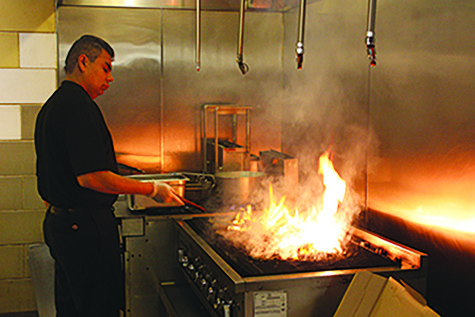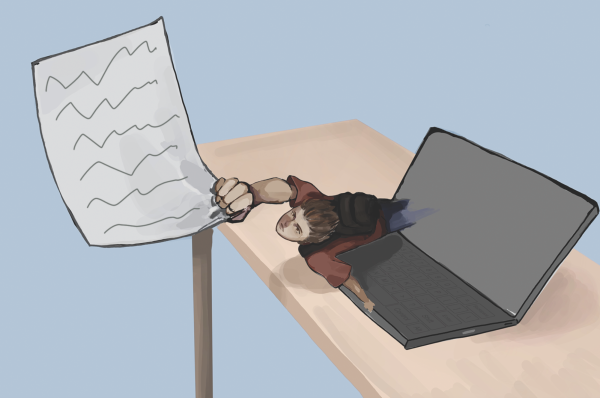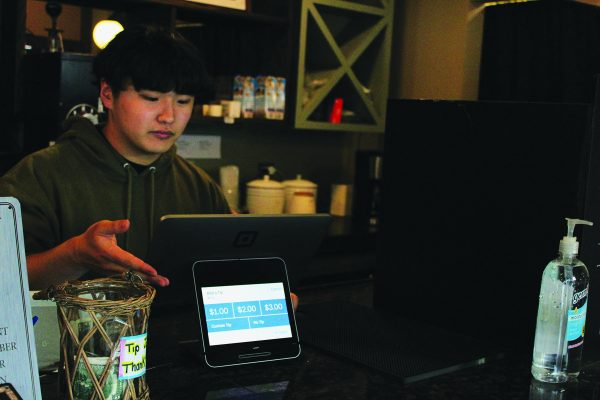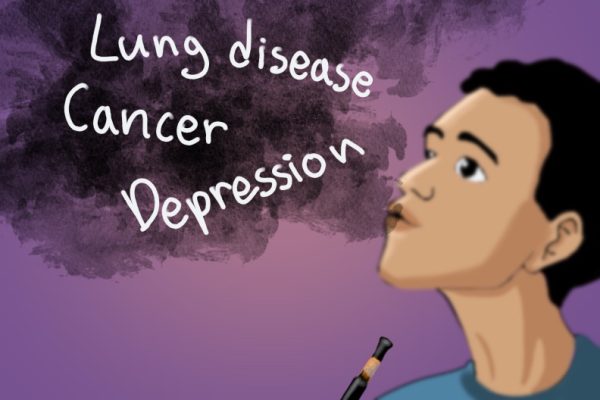Study finds teen diets may be improving despite obesity epidemic

Throughout the school day, senior Coco Yang finds that her stomach [often] growls with hunger, fueled by her desire for delicious, healthy food. To satisfy her taste buds, Yang sometimes pulls a snack from her lunch bag, silently enjoying it during her classes.
Yang said she usually brings a lunch to school but buys the popcorn chicken from the cafeteria when she wants to eat something that is unhealthy but delicious.
“I usually do not eat fast food, so when I do, I get it from the cafeteria,” said Yang. “It is like a treat for me.”
A study published in the journal “Pediatrics” on Feb. 9 found the severity of metabolic syndrome — risk factors that increase an individual’s chance of developing heart disease or diabetes — is decreasing in American adolescents. However their body mass indexes are increasing, signifying a rise in body fat based on height and weight. The study notes that teenagers may have decreased their consumption of calories and carbs while increasing their intake of good cholesterol found in products like avocados and nuts.
Penny M. Kris-Etherton, PhD, RD, distinguished professor at [the] Pennsylvania State University, said the results of the study are encouraging but worries that many individuals, including adolescents, do not know how to live a healthy lifestyle to prevent and treat obesity. She often notices the negative implications of a “western-type diet.”
“A western-type diet is a type of diet that we eat, and it’s just low in fruits and vegetables, high in refined carbohydrates, high in fatty meats, it has excess calories and it has a lot of added sugar and solid fat,” Kris-Etherton said.
She said that although the study may suggest one factor of adolescent health is changing, change is not being noted in every respect as the obesity epidemic continues, revealing a need for healthier eating habits and greater health-based awareness in society.
Junior Hannah Buzil said she orders a hamburger with french fries from the cafeteria every school day, and she knows her food choices do not reflect healthy eating habits.
She said she would consider eating a healthier diet if she could see the nutrition facts for the food she orders from the cafeteria.
According to Wayne King, the vice president of operations at Quest Food and Management, the cafeteria is in the final stages of going public with an online nutritional database that will provide customers with the nutritional information — including the calorie-count — of every item in the cafeteria.
King said that although Quest has not finalized a date for the release of the nutritional database, it is part of the company’s attempts to educate customers about health and wellness, including the healthy options available to them in the cafeteria.
“We do have bacon cheeseburgers and pepperoni pizza in the cafeteria because it is just what some kids want, but we also have a wide variety of healthy options out there,” King said.
He said Quest’s food philosophy drives the company to purchase items like local produce and hormone-free dairy products, but the items offered in the cafeteria are based on the desires of students.
Junior Marissa Rogoff cannot eat gluten because she has celiacs disease, but she said she is able to eat select items from the cafeteria. On days when she did not pack her lunch during her freshman and sophomore year, Rogoff often enjoyed a cafeteria-made salad.
Rogoff said she is pleased to have healthy options available to her in the cafeteria but has found that people believe she eats healthily because she is gluten-free. Instead, because she has unhealthy gluten-free options available to her at home, she does not always eat healthily.
Licensed dietitian nutritionist Bonnie Minsky said she recognizes that the recent study suggests some adolescents may be eating healthier diets, but she believes the study has little relevance because type II diabetes and obesity are on the rise among adolescents.
Minsky said students should be taking steps to improve their eating habits, such as making healthy choices in the cafeteria. Students have the ability to control their well-beings by choosing healthier options in the cafeteria and at home.
“I have seen the ingredients in most public school cafeteria foods, and they are horrific,” said Minsky. “I would say, however, that Glenbrook North has better choices than most.”
Buzil said she understands the importance of taking steps toward dietary changes and healthier eating, especially given the variety of items in the cafeteria.
“I want to be more aware of my eating habits,” said Buzil. “But, let’s be honest, I probably won’t.”









